While the lush green meadows and blooming valleys of Ooty and Coonoor could top your travel bucket list, there’s another piece of heaven in the Southern part of India which is sure to win your heart with its scenic beauty: Kodaikanal. A hill station, a favourite honeymoon destination and home to dense forests and majestic waterfalls, Kodaikanal is all this and a lot more. While the Kodaikanal Lake sits at the center of the small hill town and has a lot of touristy boat rides and cycling tours available, the real deal is to see the many sights beyond the tourist circuit.
Trek in the Rainbow forest
The real beauty of the hill town is best experienced on foot. A guided trek is recommended to enjoy nature’s bounty here. Early morning treks are great; just ensure you have warm clothes, good shoes and a stick that can help you navigate the uneven terrain. I decided to trek into the Rainbow Forest, next to my resort, Tamara Kodai. Syed, my guide, led from the front. Walking alongside a narrow ledge, the trek has some stunning sights including tree laden hills and waterfalls cascading amidst wildflowers and shrubs.
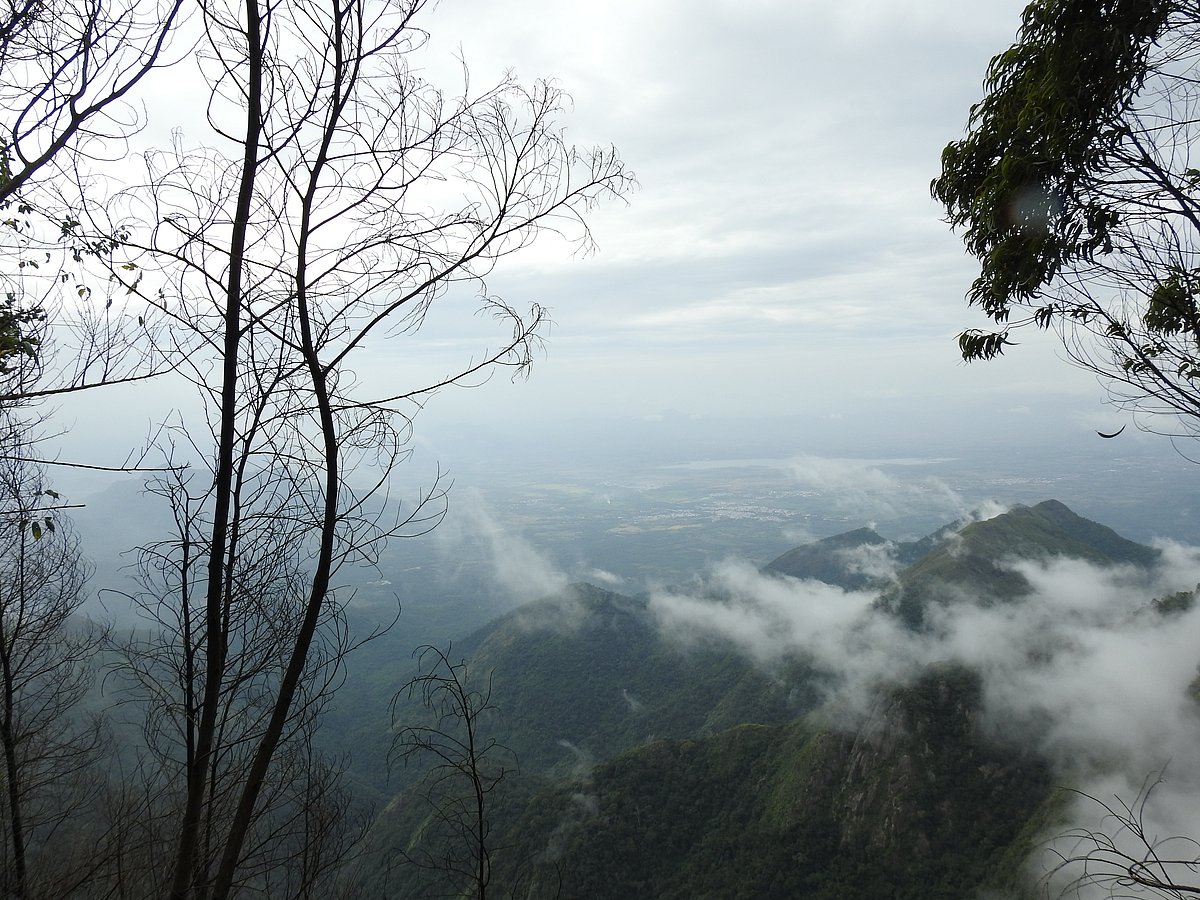
Rainbow forest | Bindu Gopal Rao
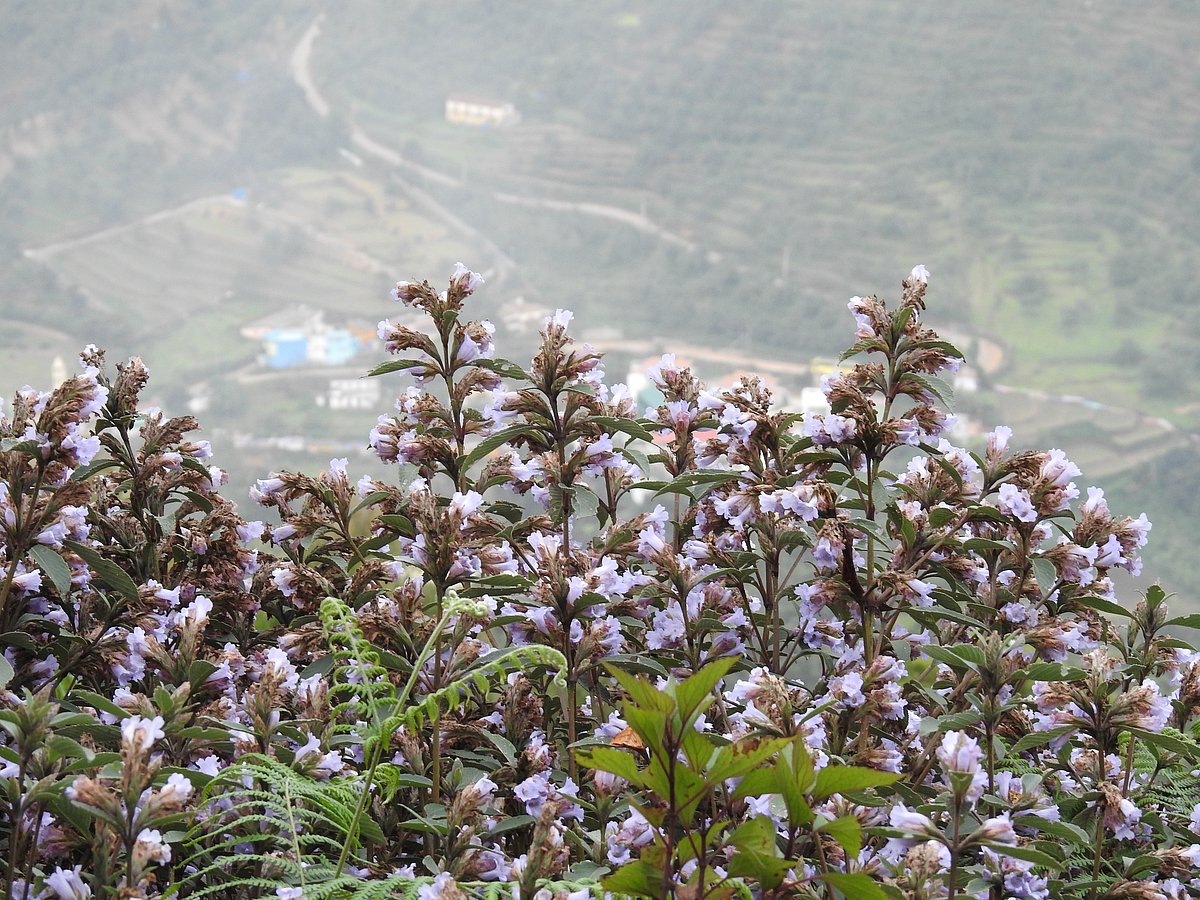
Neelakurunji flowers | Bindu Gopal Rao
As it was the blooming season of the elusive Neelakurunji flowers (that bloom once in 12 years), I was privileged and thrilled to see the entire valley swathed in hues of purple. Home to unique flora and fauna like the Red-disc Bushbrown butterfly and beautiful pink hued wild orchids, the trek also took me to a shallow water body and a small waterfall surrounded by small caves. I was also lucky to spot the endemic Palani Laughing Thrush, a beautiful grey and orange hued bird, and the Grey-Headed-Canary-Flycatcher.
Mannavanur sheep farm
Located 30 km away from Kodaikanal is the Mannavanur sheep farm, where the undulating greens with grazing sheep make it a sight to behold. The route to the farm is scenic as the road winds through dense pine and teak forests enveloped in mist. Entry to the farm is ticketed. The area is strewn with pine trees, and pinecones and wildflowers blanket the ground. While this area is the regional center of the Central Sheep & Wool Research Institute, sheep and rabbits are bred here for their wool and meat.
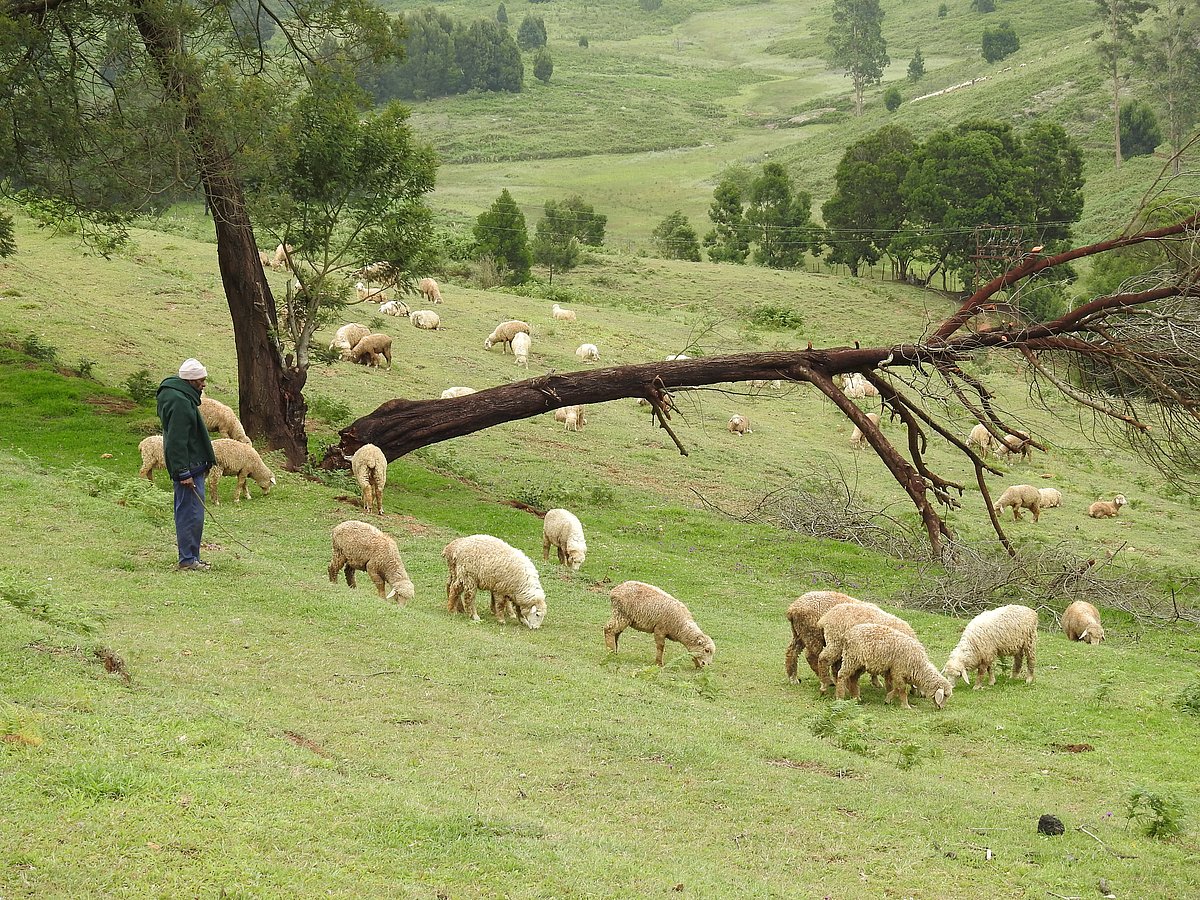
Mannavanur sheep farm | Bindu Gopal Rao
One of the high-altitude grasslands of the Palani Hills, this is also a research center and has some basic accommodation options for visitors. A beautiful lake tucked amidst the greenery is the centerpiece which is apt for one’s Instagram feeds…#naturelover!
Wildflowers including dandelions and heather plants frame the lake, creating a stunning vista. On the way to the sheep farm is the Poombarai village viewpoint from where you get a bird’s eye view of the picturesque village, which is known for the cultivation of garlic.
Kookal lake
About 30 km away from the city is the quaint village of Kookal, which is home to the serene Kookal Lake. The beautiful lake is filled with several species of geese and duck and I spotted the American Coot, Dusky Moorhen, Waterfowls, Grey Flycatcher and Peacock. The best way to enjoy the place is to soak in the sights and sounds and breathe the pristine air. An occasional villager may pass by giving you a curious look and that is probably the only interruption here!
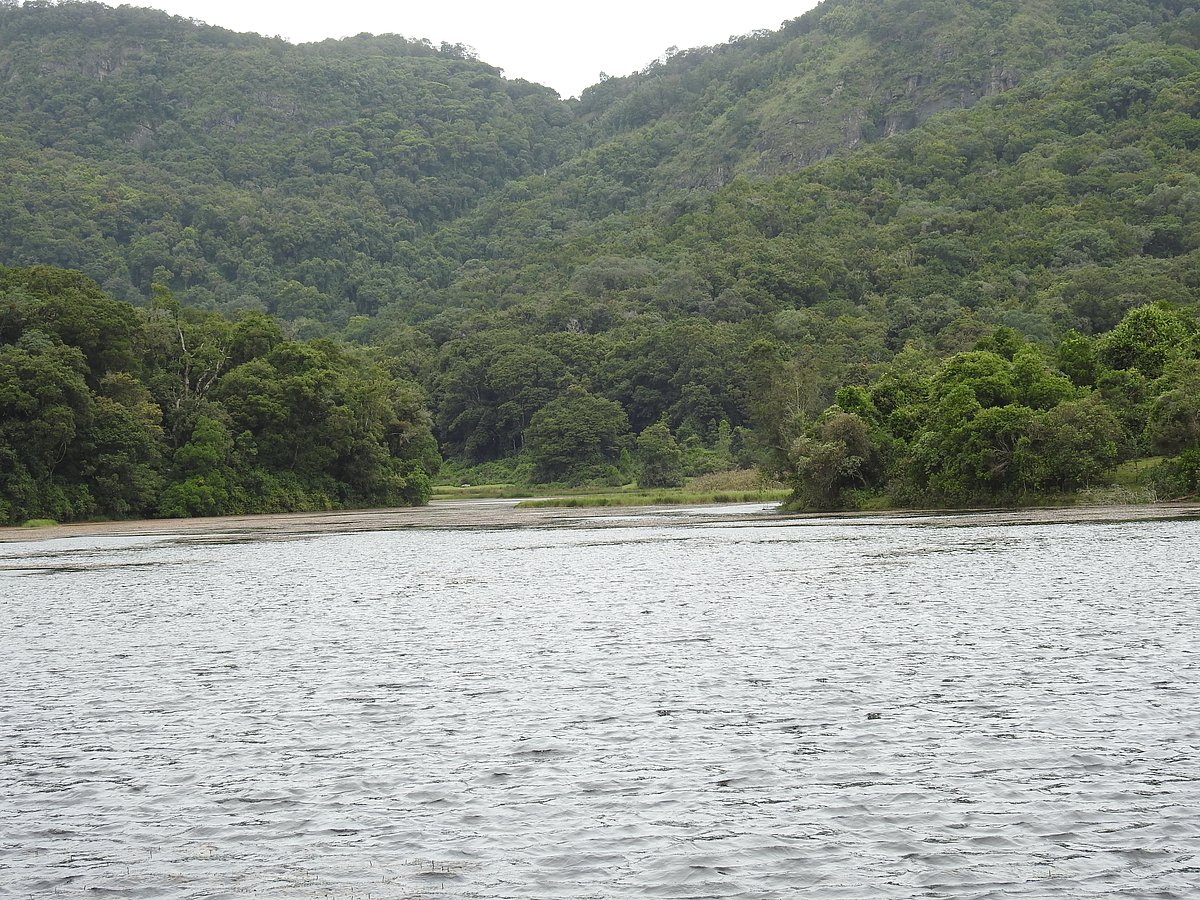
Kookal Lake | Bindu Gopal Rao
Berijam forest
Located within the Kodaikanal Wildlife Sanctuary premises, the Berijam forest and lake need entry permission from the forest department. Visiting hours are between 9:30 AM and 3:00 PM. This reserve part of the Upper Palini Shola forest is a jackpot for bird watchers as Kingfishers, Crested Serpent Eagles, Leaf Warblers and Kites happily live here. If you are lucky, you can also spot the Nilgiri Langurs that have been classified as vulnerable. These primates have a glossy black body and golden-brown fur around their head and are a rare sighting. I was fortunate to see a whole family of them when I was here. The expanse can be explored on foot and has an old Britisher’s transit camp.
Church Trail
Back in town, I suggest you ditch the tourist trap and head to the La Saleth Church, whose blue and white façade stands tall against the cliff making an imposing architectural statement. Dedicated to Our Lady of La Salette, it is over 150 years old and is a fine example of Tamil-French architecture.
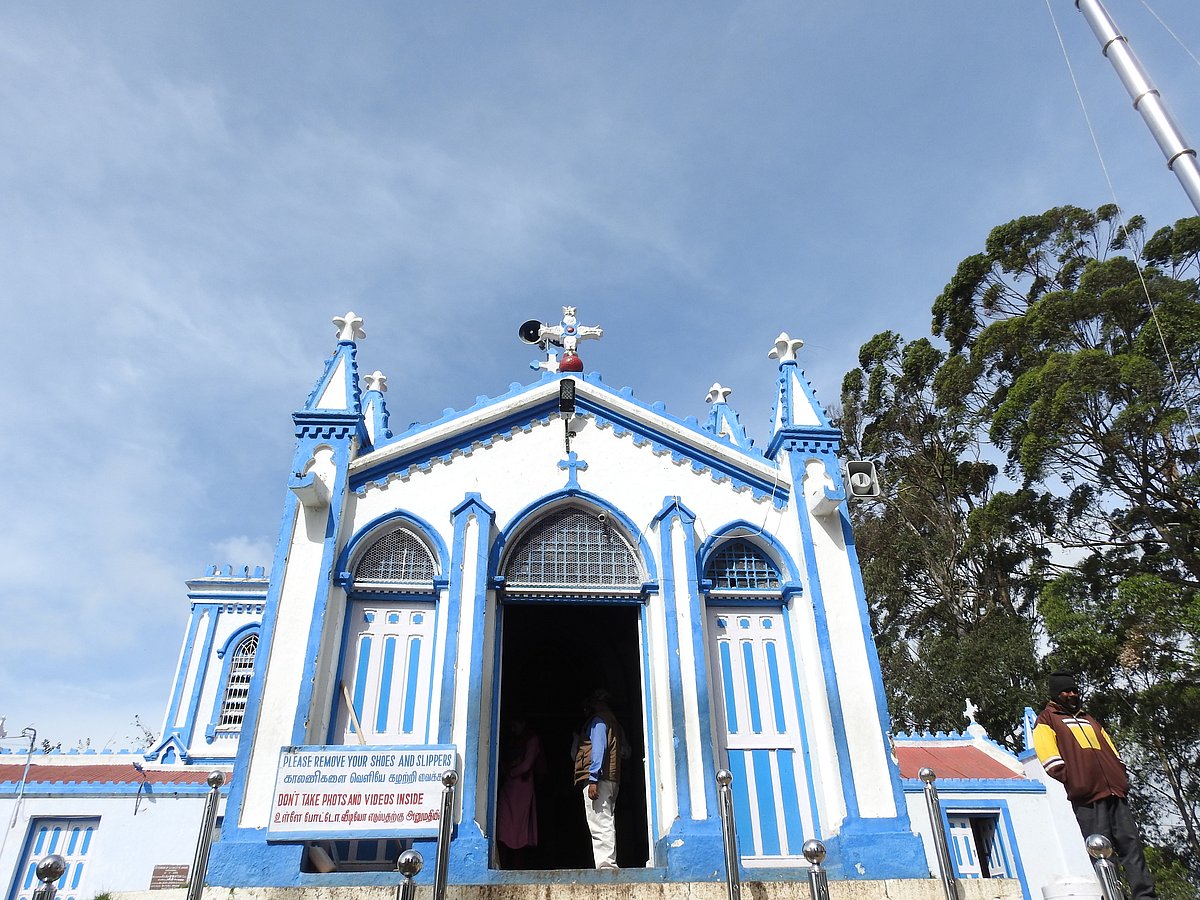
Our Lady of La Salette Church | Bindu Gopal Rao
In fact, the town has several interesting churches like the Lutheran Church that was built in 1932 and boasts of beautiful Gothic architecture with stained glass windows and stunning paintings and murals showcasing the life of Jesus Christ. The CSI Christ the King Church built-in 1895 has a delightful granite Gothic architectural façade with amazing stained-glass imagery on the inside.
Cemetery Walk and Conservation Cues
While walking around, I discovered several interesting aspects of the topography. I found wild tomatoes, a small poisonous aubergine, wildflowers, mulberry and even the dropped needles of a porcupine! There is also an old cemetery, with the graves of several British officers. Remember to stop at the Palani Hills Conservation Council on Lower Shola Road. Started in 1985 to promote sustainable development, the council has a mix of ecologists, environmentalists, botanists and wildlife enthusiasts who work with the villages to highlight the need for conservation.
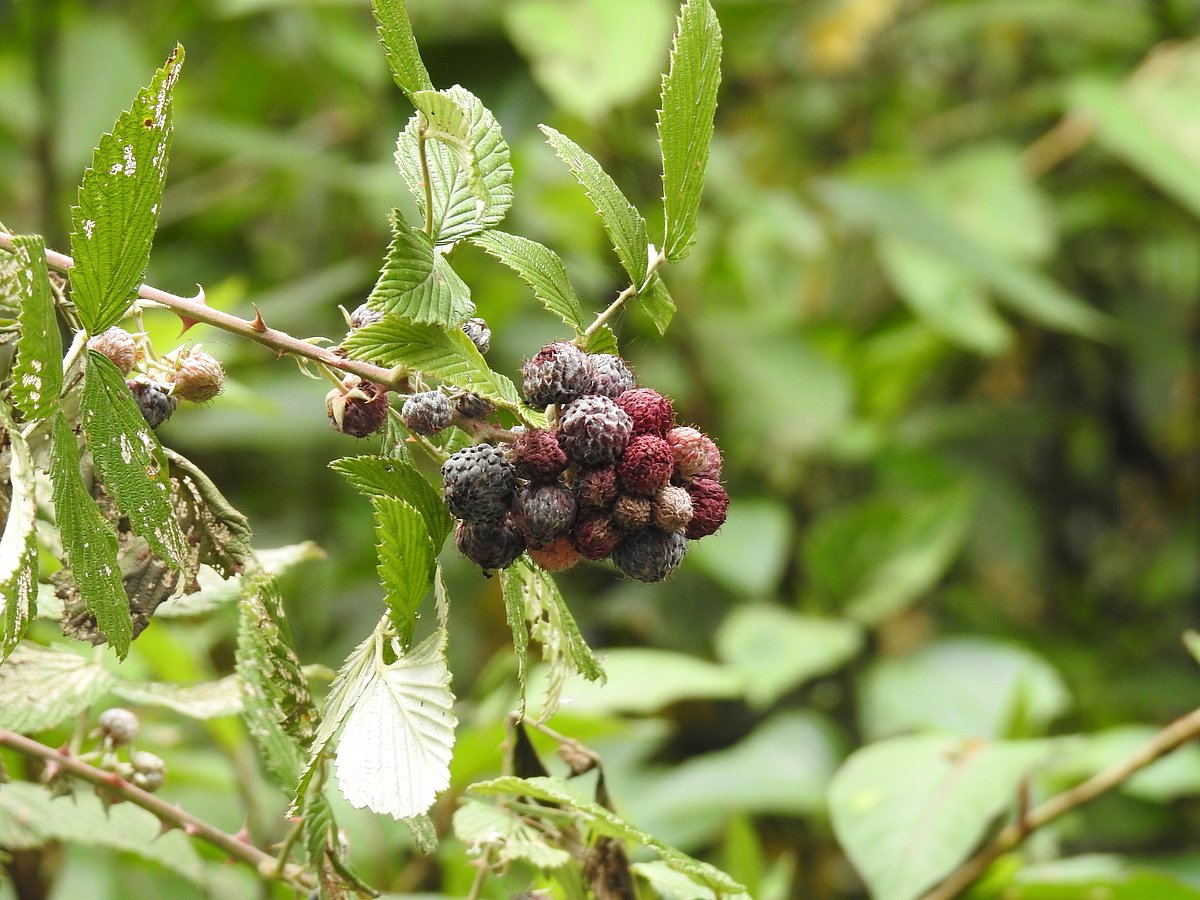
Wild mulberries seen on a walk | Bindu Gopal Rao
The premises have lovely cottages and houses a nursery with over a 100 native species. The team has been planting trees, fighting unsustainable tourism, monitoring water pollution and mercury waste and basically trying hard to conserves the eco system here. With the pandemic raging on, it is places like Kodaikanal that give me hope that there is a better tomorrow.











